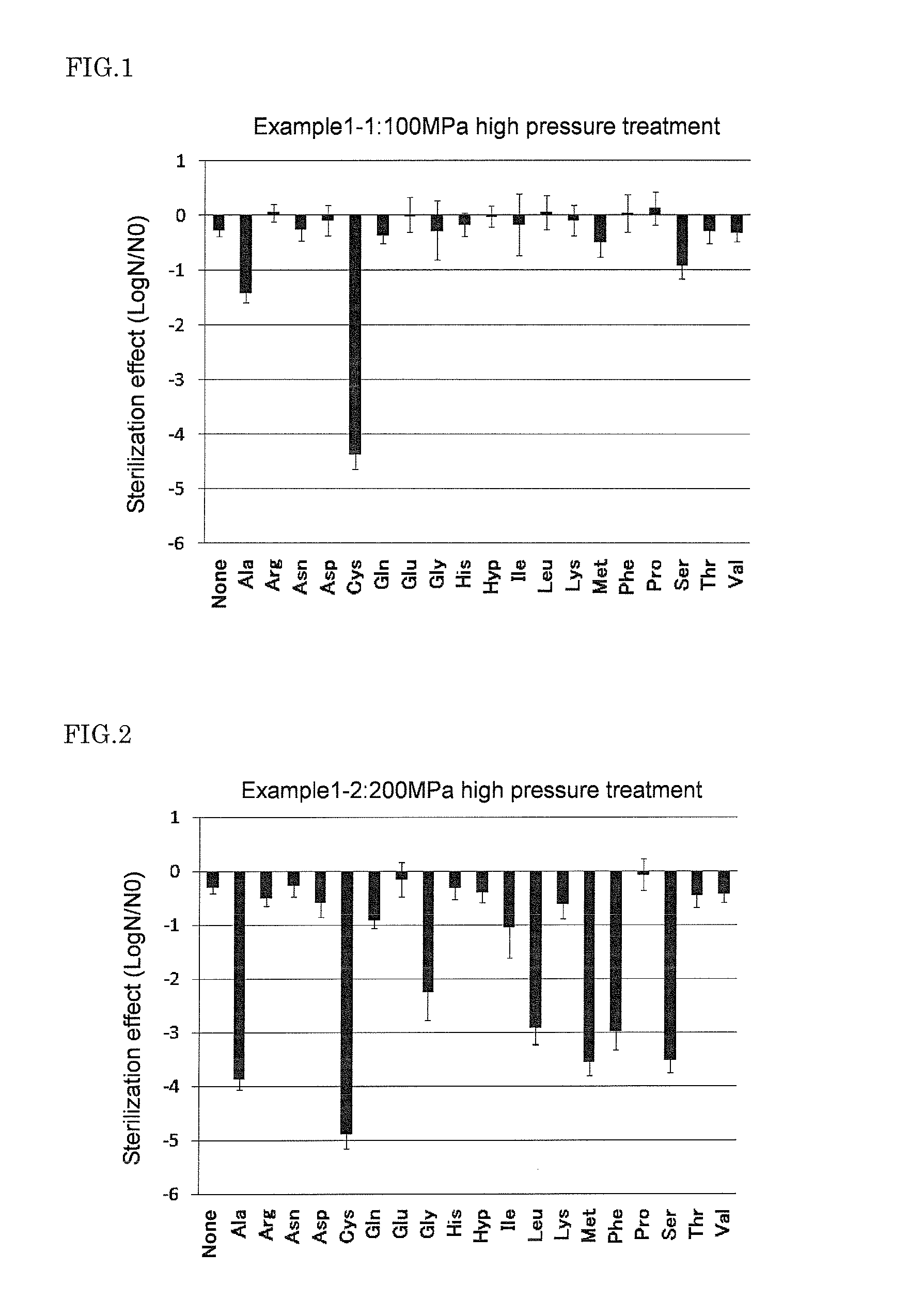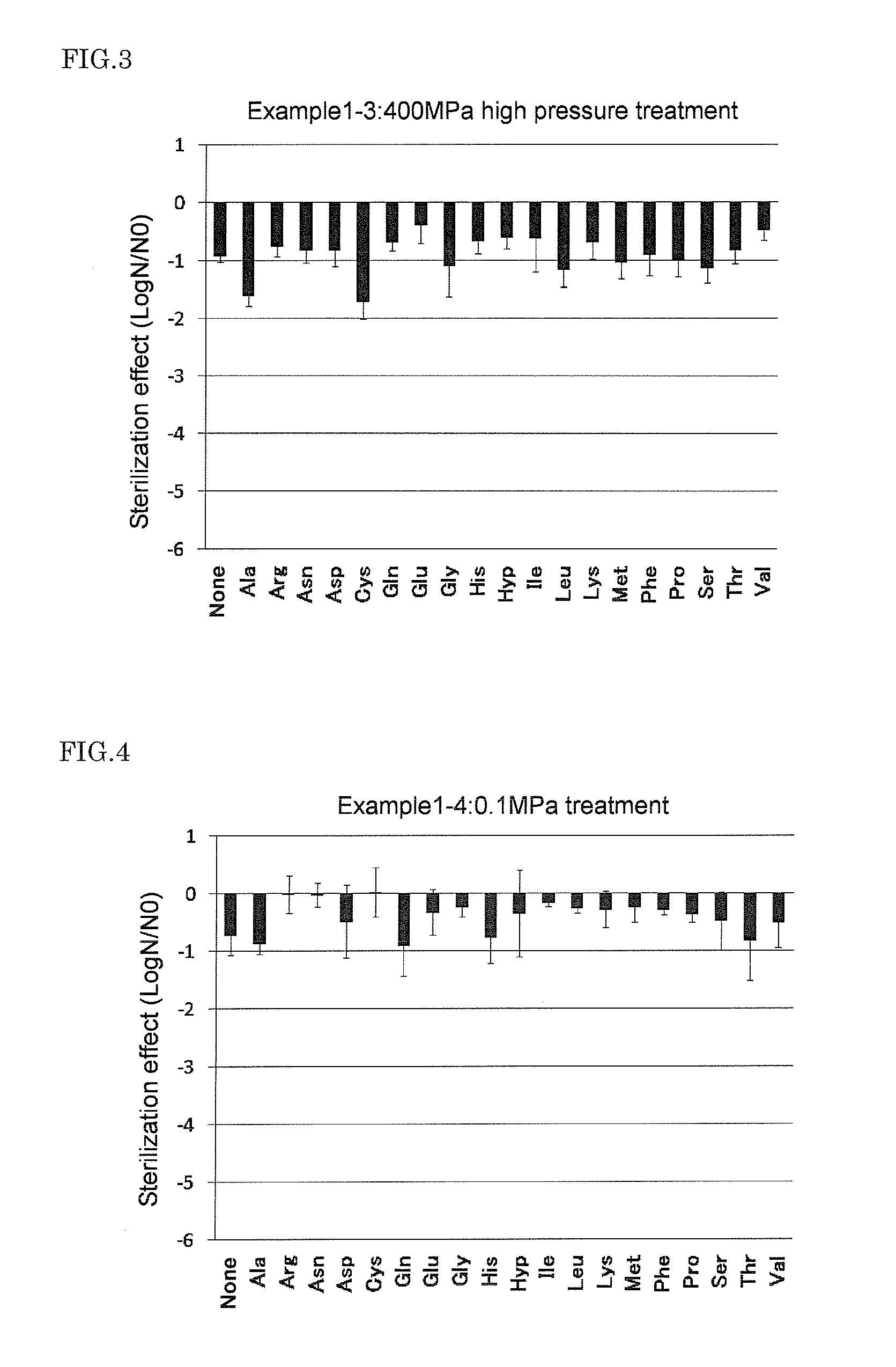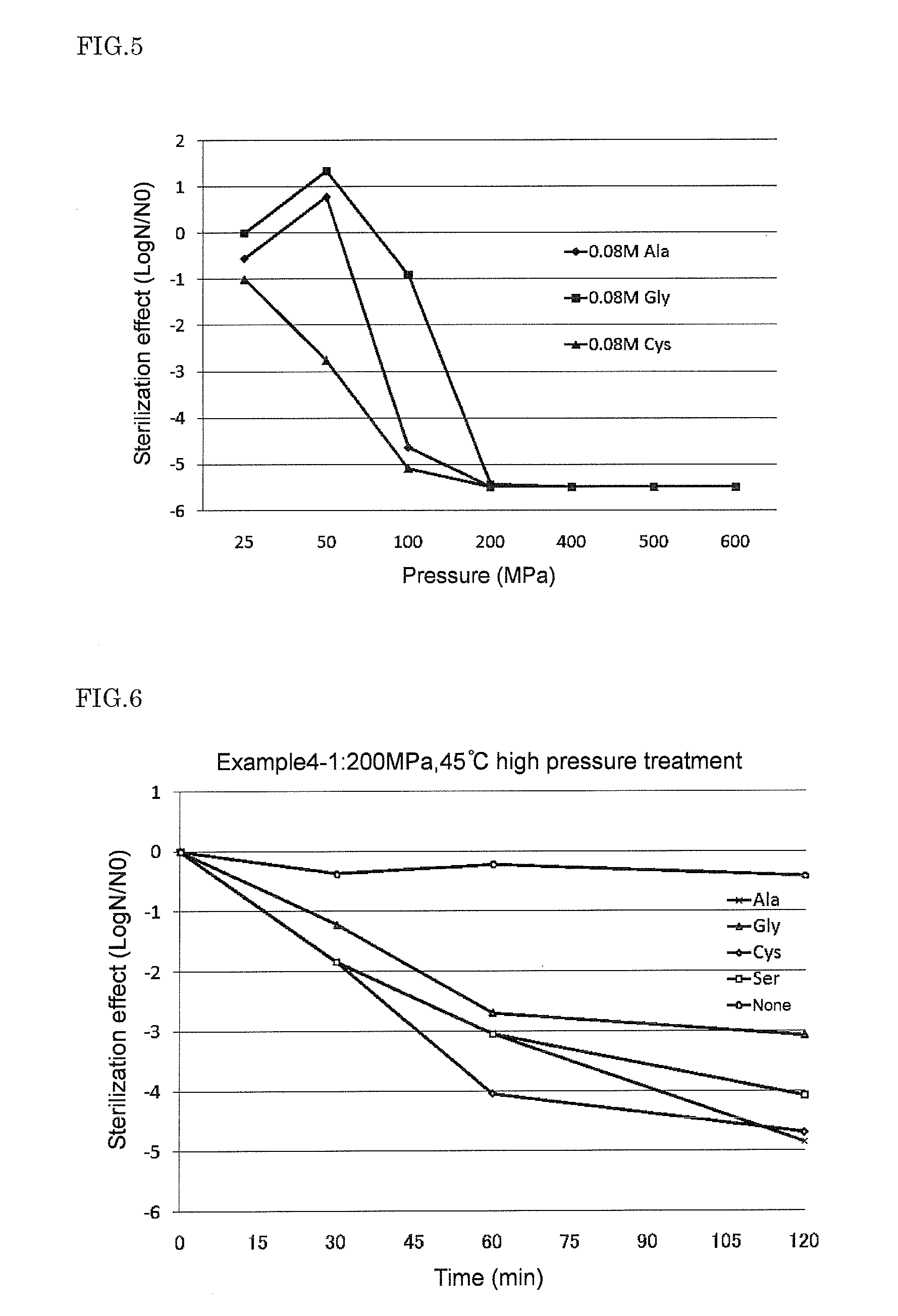Method For Sterilization Of Food
a technology for sterilization and food, applied in the field of food sterilization, can solve the problems of difficult to sterilize the spores of such spore-forming bacteria by high-pressure sterilization alone, unsatisfactory sterilization, and difficult sterilization, etc., to achieve the effect of high heat resistance, difficult sterilization, and high pressure resistan
- Summary
- Abstract
- Description
- Claims
- Application Information
AI Technical Summary
Benefits of technology
Problems solved by technology
Method used
Image
Examples
example 1-1
[0060]Various amino acids were added, respectively, so that the concentration would be 0.08 mol / L, and the heat treatment was carried out at 80° C. for 10 minutes after the high-pressure treatment at 100 MPa and 45° C. for 120 minutes.
example 1-2
[0061]Various amino acids were added, respectively, so that the concentration would be 0.08 mol / L, and the heat treatment was carried out at 80° C. for 10 minutes after the high-pressure treatment at 200 MPa and 45° C. for 120 minutes.
example 1-3
[0062]Various amino acids were added, respectively, so that the concentration would be 0.08 mol / L, and the heat treatment was carried out at 80° C. for 10 minutes after the high-pressure treatment at 400 MPa and 45° C. for 120 minutes.
PUM
 Login to View More
Login to View More Abstract
Description
Claims
Application Information
 Login to View More
Login to View More - R&D
- Intellectual Property
- Life Sciences
- Materials
- Tech Scout
- Unparalleled Data Quality
- Higher Quality Content
- 60% Fewer Hallucinations
Browse by: Latest US Patents, China's latest patents, Technical Efficacy Thesaurus, Application Domain, Technology Topic, Popular Technical Reports.
© 2025 PatSnap. All rights reserved.Legal|Privacy policy|Modern Slavery Act Transparency Statement|Sitemap|About US| Contact US: help@patsnap.com



